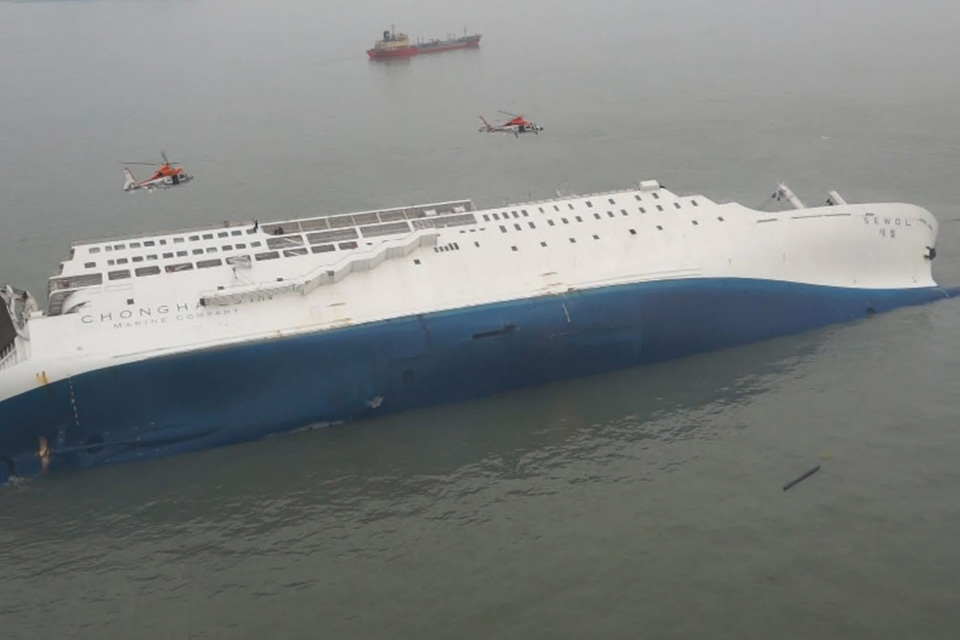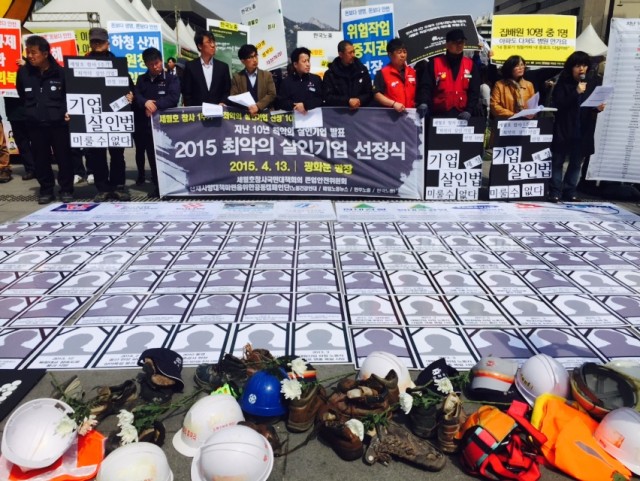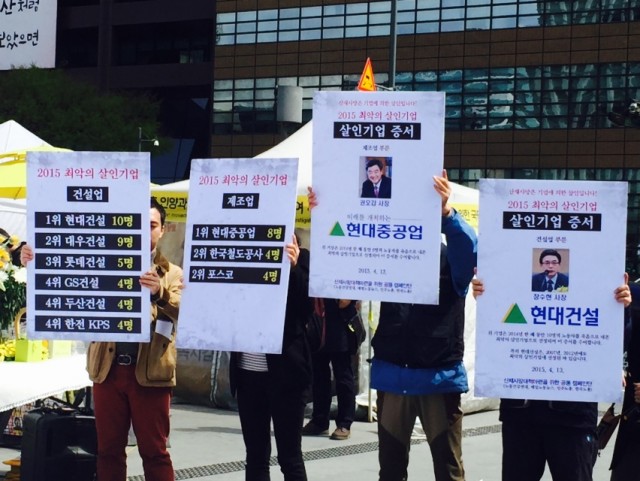Sewol Ferry disaster
#1.

Sewol ferry disaster was tragic accident where 304 people drowned inside the sinking ship, where 246 teenagers on their way for school trip were included among the casualties. Waves of mourning and condolences spreads for the first anniversary, and the bereaved is calling for independent investigatory agency to scrutinize hidden truth of the disaster. As the Park administration is neglecting the demand, the bereaved is still fighting for the truth on the street.
On April 16th, 2014, a ferry sunk on the Coast of Jin Island, south sea of Korea. Captain, crews and a few passengers have escaped firsthand, while the ship sank gradually for more than few days, disordered and impotent rescue actions ran by the administration have not saved a single life.
There lie many structural problems including illegal reconstruction of the shipment, overloading, corruption of the civil servants, and temporary workers without safety education behind the disaster.
City of Ansan, where victimized 246 high school students resided, fell into great sorrow. No explanation on “why their children were NOT saved” was given to any parents from the government. The parents have been fighting with the Park administration for whole year. To meet the president, they went on sit-in demonstration, fasting on the street calling for the public’s support. The special act was legislated to find out the truth, but the administration downsized the budget and manpower for the task. Korean civic, human right, and labor movements are unifying their forces to protest for this cut-back, and SWH is also one of them. Citizens of South Korea think that the democratic value and justice will fade if the truth of this catastrophic event is not fully covered and the responsibility of the administration is not accused appropriately.
#2.

Solidarity for Worker’s Health have been commemorating the occupational fatalities by naming the most hazardous corporate as ‘the worst homicidal corporate’ and making them public for last 10 years. Occupational fatality of South Korea is highest among OECD countries, and this has been true for the whole 10 years. South Korea have generous legislation for crimes and corruption of corporates with relatively low corporate tax. Low wages, non-regular employment-more than 50% of total employment, and discrimination to non-regular employee have been serious problem. Especially, risky industries such as construction, shipbuilding, steel manufacture mostly use subcontract non-regular workers for the hazardous tasks. Many occupational fatalities occurring in these industries are becoming social problem, even because these corporates are major conglomerates monopolizing the wealth of the society.

Koreans mostly conceive the death of employee while working unescapable. Calling for corporate’s responsibility for the death is not strong enough. SWH have been claiming that the fatal accident which can be prevented by proper investment and systemic approach is homicide and crime of the corporate. On this April, we will denounce the list of corporates which killed the most workers in last 10 years. Perhaps, the conglomerates will be honored again.
#3.
With breaking heart, we will denounce one more list on coming 1st anniversary of Sewol-ferry disaster. It is the list of corporates which invoked dreadful disasters where many human lives were sacrificed. Each disasters were announced by the press, then forgotten as it had not happened, whereas the corporate avoided their responsibilities. It will be a ceremony which recalls the homicides and crimes of brutal corporates once more.
Also, our original list of the corporates responsible for most occupational fatalities will be announced. This includes deaths by karoshi-death from overwork, occupational disease, suicide, as well as occupational accidents. While corporates coerce longer working-hours and restructuring, workers in Korea live from day to day with the fear of losing their physical and mental health, and being sick to the ground. We denounce these lists to warn the Korean corporate’s labor policies which threaten the health and life of the employee. Sadly, we anticipate to see many conglomerates and public enterprises filling up the list.
Related article from NY Times
http://www.nytimes.com/2015/04/12/world/asia/legacy-of-south-korea-sewol-ferry-sinking.html?_r=0
(This post is from “Solidarity for Worker’s Health”; April, 2015)
